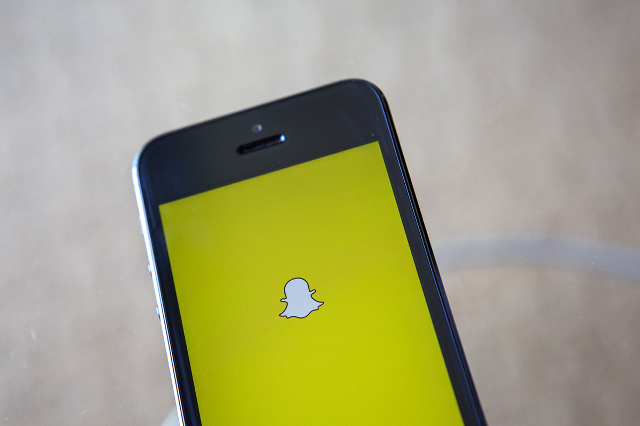Confidence in Snapchat’s $16 billion value is eroding
Snapchat, maker of a free mobile app that lets users send videos and messages that disappear in seconds, is struggling to gain traction with advertisers, fueling investor concern that its $16 billion valuation isn't justified by a business that hasn't yet shown it has a steady source of income.
Even in a world where upwards of 140 private companies are reckoned to be worth $1 billion or more, Snapchat's outsized value stands out. Fidelity Investments' decision to slash the estimated value of its Snapchat stake by 25 percent in the third quarter exacerbated concern about the company's ability to meet advertisers' expectations.
Startups are not expected to be profitable, but the combination of Snapchat's high valuation and losses puts it "in a class by themselves," said Anand Sanwal, CEO and co-founder of venture capital data firm CB Insights.
"These unicorns are sort of priced to perfection. They are getting up-front credit for future year growth," said Sanwal, referring to the term for private companies with valuations of at least $1 billion. "But if you have a misstep, which it sounds like Snapchat had, then you don't leave yourself a lot of room for another mistake."
For Snapchat advertisers, the question is whether prices that can reach more than $500,000 for some ads is worth it when the company lags competitors in targeting specific consumers and measuring how ads perform.
"If Snapchat doesn't get that figured out, they're in trouble," said Nick Godfrey, chief operating officer at RAIN, a digital strategy agency.
Snapchat lost more than $128 million in the first 11 months of 2014, according to a financial statement leaked earlier this year, which also showed Snapchat had revenue of $3.1 million. Its advertising business began in mid-October. Tech media outlet Re/code estimated that Snapchat's revenue could reach $50 million in 2015, citing sources familiar with the company. Snapchat doesn't comment on its revenue or its losses.
The company has raised $1.2 billion from investors, ample resources to develop its advertising techniques. But time may be limited as the company is in early discussions for an IPO, according to sources. Snapchat's $16 billion valuation was calculated at its most recent funding round in May based on how much investors were willing to pay for shares.
More than 100 companies, including General Electric, McDonald's, Nike and Coca-Cola have advertised on Snapchat to capture the attention of the app's predominantly young audience — 60 percent of users are aged 13 to 24. More than 100 million people use Snapchat to watch 6 billion videos daily.
So far, many advertisers have had a lukewarm response to the results.
Toyota earlier this year launched an ad campaign on Snapchat for the Corolla, targeting young drivers buying their first car. It ended that campaign and isn't yet sure whether Snapchat will be a useful partner until it offers better targeting capabilities and data, a Toyota representative said.
General Electric signed up for a second ad campaign that will run for two weeks during the holidays even though Snapchat still lags other social media in its array of offerings, said Sydney Williams, GE's manager of global social media marketing.
"I'm looking forward to Snapchat coming out with a little more in-depth analytics," Williams said, though Snapchat has not offered a timeline for improvements.
Still, "the numbers and engagement on the platform are staggering," Williams said. "This isn't a platform that we can walk away from."
Advertisers can target their ads based on gender and location of Snapchat users, and occasionally age, but little else, Snapchat said. Advertisers say they know little about their ads' reach and effect. On Facebook, by contrast, companies can target consumers with ads based on users' hobbies, interests, employer and political leanings.
Though Coca-Cola's first ad campaign on Snapchat was a disaster — 75 percent of the audience that viewed the ad skipped it after just three seconds — it has run successful ads since and plans to continue, said Emmanuel Seuge, senior vice president of content for Coca-Cola North America.
Snapchat is working with advertising clients to evolve and is constantly trying to strike a balance between satisfying advertisers and protecting users' privacy, said Mary Ritti, vice president of communications.
"It's early days and we're really focused on building long-term relationships with brands," Ritti said. While the four-year-old company lacks the technological sophistication of Facebook, which began advertising a decade earlier, Snapchat's slimmed-down offerings also reflect its decision to avoid bombarding users with ads.
Slow progress has some investors impatient. One portfolio manager at a large U.S. mutual fund said there are concerns about Snapchat's revenue growth, and that Facebook has been siphoning revenue away. Facebook in the last quarter posted $4.3 billion in ad revenue, with 78 percent of that coming from mobile, up from 66 percent a year ago. It has 2.5 million active advertisers.
Investors willing to wait three to five years for Snapchat to develop its ad business are likely to see a payoff, but "if they are looking for an exit tomorrow, there is probably a cause for concern," said Carrie Seifer, president of digital, data and technology at Starcom MediaVest Group.

















